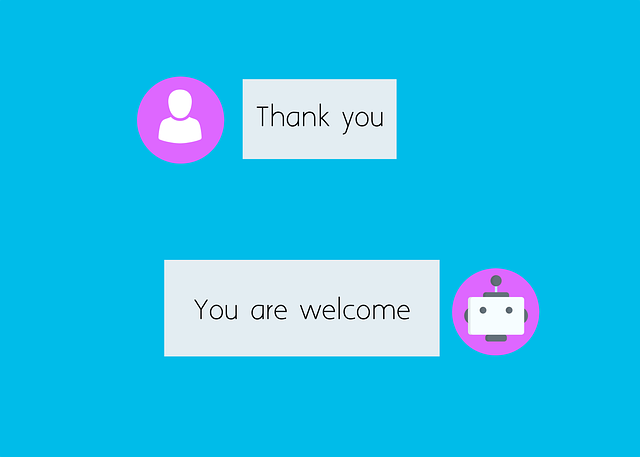AI chatbots are transforming e-commerce customer service by offering 24/7 support, instant responses, and efficient handling of basic queries like product recommendations and order tracking. They free up human agents for complex issues, improving customer satisfaction and loyalty. With advancements in NLP, these chatbots provide more accurate responses over time. Implementing an ecommerce chatbot involves defining use cases, choosing a platform (e.g., Dialogflow, IBM Watson Assistant), designing conversational flows, integrating with e-commerce systems, developing and training the chatbot, and monitoring performance through analytics. Challenges include ethical standards, privacy, security, interpreting context, and human emotions, but a hybrid model combining automation and human empathy is the future-proof approach.
“The future of customer service is here, and it’s powered by artificial intelligence (AI) chatbots. With the exponential growth of e-commerce, businesses are increasingly turning to AI chatbots as a game-changer in providing efficient and effective support. This article explores the rising trend of ecommerce chatbots, highlighting their key benefits and impact on enhancing customer experiences. We’ll guide you through implementing these tools step by step and delve into future prospects and challenges, ensuring you’re equipped with insights to navigate this exciting technology.”
- Understanding the Rise of Ecommerce Chatbots
- Key Benefits of AI Chatbots in Customer Service
- How AI Chatbots Enhance Customer Experience
- Implementing Ecommerce Chatbots: A Step-by-Step Guide
- Future Trends and Challenges for AI Chatbots in Customer Service
Understanding the Rise of Ecommerce Chatbots

In recent years, the rapid growth of e-commerce has driven a significant shift in customer expectations, with instant and personalized support becoming the norm. This has led to a surge in the adoption of AI chatbots as a fundamental tool for enhancing customer service across online retail platforms. Ecommerce chatbots offer 24/7 availability, immediate response times, and a cost-effective solution for businesses aiming to provide efficient support to their growing customer bases.
The integration of these intelligent virtual assistants allows retailers to handle a high volume of basic customer inquiries, from product recommendations to order tracking, enabling human agents to focus on more complex issues. With advancements in natural language processing, ecommerce chatbots can now understand and respond to customer queries with remarkable accuracy, further elevating the overall shopping experience.
Key Benefits of AI Chatbots in Customer Service

AI chatbots are transforming customer service across industries, including ecommerce. One of the key benefits is their round-the-clock availability; they never sleep or take breaks, ensuring that customers receive instant support whenever they need it. This enhances customer satisfaction and loyalty by reducing wait times and increasing response rates.
Moreover, these chatbots can handle a high volume of simple to moderately complex queries simultaneously, which not only improves efficiency but also allows human agents to focus on more intricate issues. Ecommerce chatbots are adept at providing product recommendations, processing returns, tracking orders, and answering frequent customer questions, thereby boosting sales and streamlining operations for businesses.
How AI Chatbots Enhance Customer Experience

AI chatbots are transforming the customer service landscape, particularly in the realm of ecommerce. By implementing an ecommerce chatbot, businesses can significantly enhance the overall customer experience. These intelligent virtual assistants are available 24/7, ensuring that shoppers receive instant support and answers to their queries regardless of time zones or staffing schedules. This promptness can boost customer satisfaction and loyalty, as quick issue resolution is a key factor in fostering positive interactions.
Moreover, AI chatbots offer personalized interactions tailored to individual user needs. Leveraging machine learning algorithms, they learn from each conversation, improving their responses over time. This level of customization allows for a more engaging and efficient customer service experience, especially for common inquiries or simple product recommendations. As a result, human agents can focus on complex issues, further optimizing resource allocation and improving overall operational efficiency.
Implementing Ecommerce Chatbots: A Step-by-Step Guide

Implementing an ecommerce chatbot can transform your customer service and sales strategies, enhancing user experience and boosting business growth. Here’s a step-by-step guide to help you integrate this powerful tool effectively:
1. Define Your Chatbot’s Purpose: Start by identifying specific areas where an ecommerce chatbot can add value. This could range from providing product recommendations to answering FAQs, processing basic orders, or handling customer inquiries. Clearly establishing these use cases will guide your chatbot development and ensure it aligns with your business needs.
2. Choose the Right Platform: Select a robust chatbot platform that supports ecommerce integrations. Look for features like natural language processing (NLP), integration capabilities with your existing e-commerce system, and customizable scripting options. Popular choices include Dialogflow, IBM Watson Assistant, and Microsoft Bot Framework.
3. Design Conversational Flows: Map out the customer journey and design conversational flows that mimic real interactions. Define intents, entities, and responses that cater to each potential user query. This step is crucial for creating a seamless and intuitive chatbot experience.
4. Integrate with Your E-commerce System: Seamlessly connect your chatbot platform to your e-commerce system using APIs or pre-built integrations. This ensures data synchronization and enables the chatbot to access product information, inventory levels, order status, and customer details.
5. Develop and Train the Chatbot: Using the chosen platform’s tools, build your chatbot by creating dialogue nodes and adding logic. Train the chatbot with a diverse set of user inputs and expected responses. Continuous testing and refinement are key to improving accuracy and effectiveness.
6. Implement and Monitor Performance: Deploy the chatbot on your website or messaging platforms like Facebook Messenger, WhatsApp, or Telegram. Continuously monitor its performance through analytics provided by the platform. Analyze user interactions, identify areas for improvement, and make necessary adjustments to enhance both functionality and user satisfaction.
Future Trends and Challenges for AI Chatbots in Customer Service

As AI chatbots continue to evolve, future trends suggest an even more seamless integration into customer service for businesses, particularly in the ecommerce sector. Advanced natural language processing (NLP) will enable them to understand complex queries and provide contextually relevant responses, enhancing user experiences. Personalization is another key area of development; chatbots can leverage customer data to offer tailored interactions, increasing satisfaction levels. However, challenges remain. One significant concern is maintaining chatbot ethical standards, ensuring privacy and security in handling sensitive customer information. Additionally, while NLP improvements are remarkable, contextual nuances and subtle human emotions can still be challenging for AI to interpret accurately.
The future of ecommerce chatbots lies in their ability to strike a balance between automation efficiency and human-like empathy. They must become more adaptive, learning from each interaction to refine their responses. Collaborating with human agents, chatbots can handle escalated issues, ensuring swift resolution while maintaining customer satisfaction. This hybrid approach addresses current limitations, positioning AI chatbots as powerful tools for delivering efficient, personalized, and empathetic customer service in the ecommerce space.
AI chatbots are transforming customer service in the bustling world of ecommerce. By understanding their key benefits, such as 24/7 availability, cost-effectiveness, and improved customer satisfaction, businesses can harness their potential to enhance interactions and drive sales. Implementing these chatbots isn’t as daunting as it seems; a well-planned, step-by-step approach can ensure successful integration. As we look ahead, ongoing advancements in AI technology will continue to shape the future of ecommerce chatbots, addressing challenges and opening new possibilities for customer engagement.
